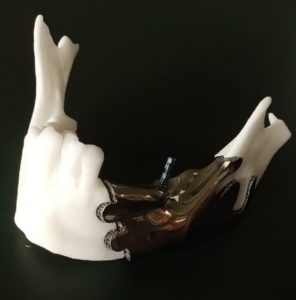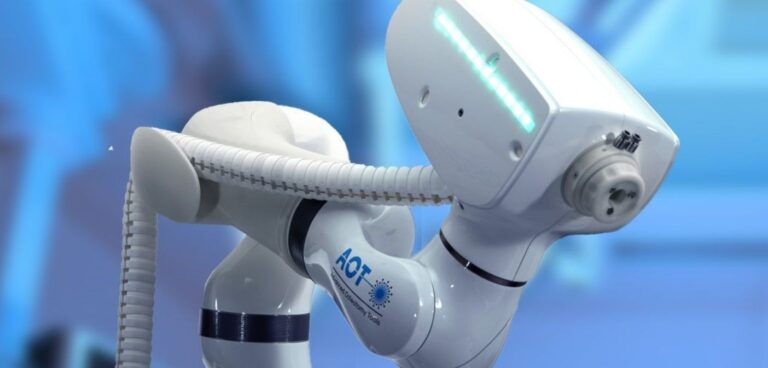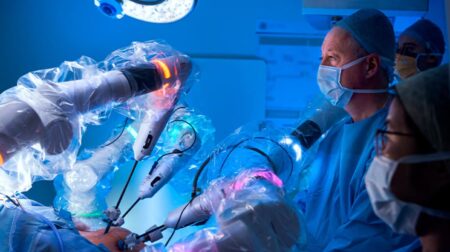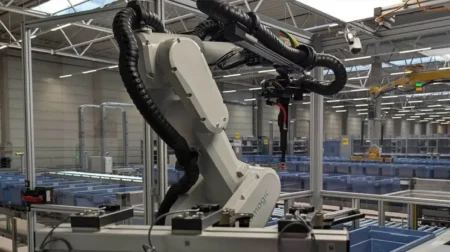Swiss med-tech start-up Advance Osteotomy Tools (AOT) has obtained CE certification for its contact-free laser bone-cutting robot.
According to AOT, its patented CARLO (Cold Ablation Robot-guided Laser Osteotome) system can cut human bones precisely and contact-free with a specialised laser using a robot.
The laser-beam vaporises water inside the bone substrate within milliseconds, enabling bone to be removed precisely in layers. The system leaves no residue and the laser can cut as deep as desired or until it is severed.
Furthermore, new cutting forms allow functional geometries for patient-specific, precisely-fitted requirements. The laser-head is mounted on a tactile robotic arm and controlled by a navigation system.

AOT added that every movement of a patient or change of operation set-up leads to immediate termination and the laser-head refocuses itself automatically until the correct position is reached again.
This is said to ensure automatic readjustment of any changes from a safe distance without patient contact.
Additionally, the laser system requires no operating tools and there is no drill or saw blade to bend, which could break-off and harm a patient.
A pre-operative plan of the bone incision, which is created electronically, is passed on to the robot for autonomous execution without media discontinuity. According to AOT, this is an important step toward a continuous digitisation process in surgical interventions.
Cyrill Bätscher, CEO of AOT, said: “The CE certification after years of intensive development is an important milestone. We have demonstrated the enormous potential of contact-free, robot-assisted surgery based on our laser technology for cutting bones.
“We have come a huge step closer to our vision of elevating classic surgical tools to the next level with our latest technology for the benefit of patients.”
To receive CE certification, CARLO was used for the first time in a clinical study featuring operations for jaw correction. AOT said this proved the efficiency and safety of the technology in a clinical environment.
The University Hospital Basel, the Medical University of Vienna and the University Medical Centre Hamburg-Eppendorf took part in the study.








